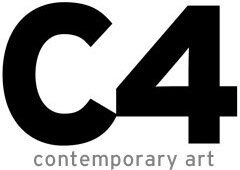|
A fascinating aspect of design appears on the utilitarian front. Despite the nonaesthetic requirements of the inner workings of our most humble machines, one would expect components built at different times, by different manufacturing concerns, using the same technology to be relatively free of 'design' as we know it. However - it is in this place that the Zeitgeist makes itself most at home. All it would require to make this most plain is to view a collection of hammers (whose design requirement is most humble) made throughout the decades - to clearly see the impression of the collective at any given time. That is to say - we need to ask interesting questions about the 'style' we impress upon the objects of our utility.

This collection of 19 photographic works attempts to do just that. It also opens our eyes to a newly seen world of architecture(s), hidden by the walls of mid-century television sets and radios which housed them. This study of the typology of the vacuum tube, much as the studies of Bernd and Hilla Becher accomplish, illustrate in the most controlled fashion, variables of design and delicate cities that might never otherwise have been noticed. It is only through the rigor of near-scientific controls and the 'disrobing' of aspects of presentation which might otherwise color our experience of such objects. They appear to take on a life of their own. As if to appear to have individual souls - or be seen as individual bottles, bobbing on the ocean of meaning and representation - whose messages are murmurs from the collective consciousness. This is the legacy of Romantic Materialism that we take for granted. That each object, an artifact of human culture, conveys not only passive signifiers of the culture in which it was forged, but also a heuristic telegram... a user's guide if you will - to decoding higher level information about both Creator and the Creator's culture. But this is already just speculation and a simple urge for the viewer of the work to dig a little bit deeper - and to explore alternate meanings within the work.
The prints themselves have been handcrafted using materials and methods that are rare today - but commonplace during the 'age of progress' (i.e. -the postwar period). Therefore they look UTTERLY unlike anything you might see printed by digital means as is so common these days. One could attempt to describe subjective attributes the blacks, whites and greys exude. It's not clear that would make the point however. Standing in front of the work, feeling the presence of the work is the only way to get a real sense of what's going on tonally and spatially. The large prints also establish a corporeal presence that adds a whole new level to the affair. Again - this is a sensual aspect which has to be experienced, though something common to all large representational photographic works placed in close proximity to the body. Each process, however, has it's own characteristics which set the tone of the physical encounter.
|



